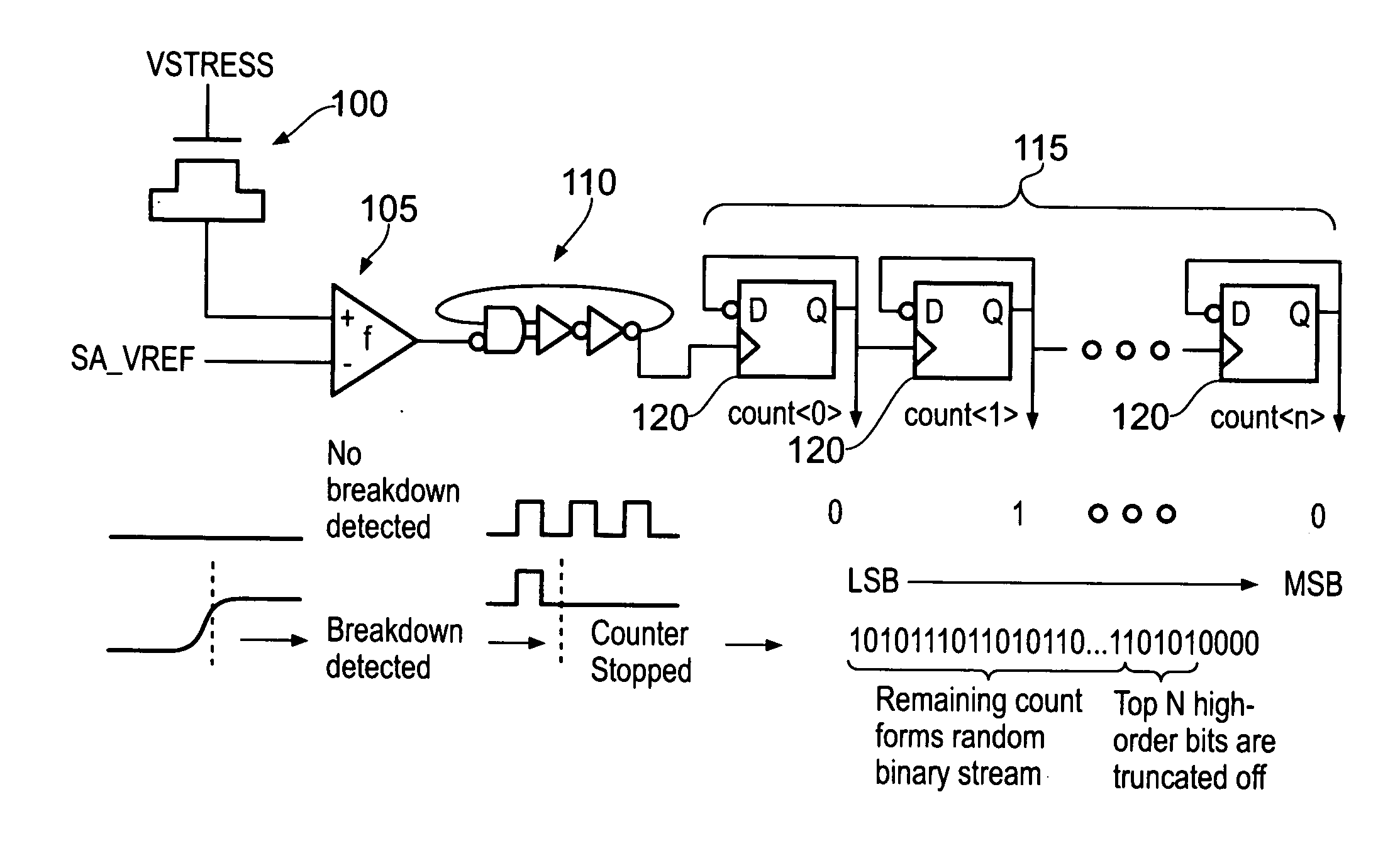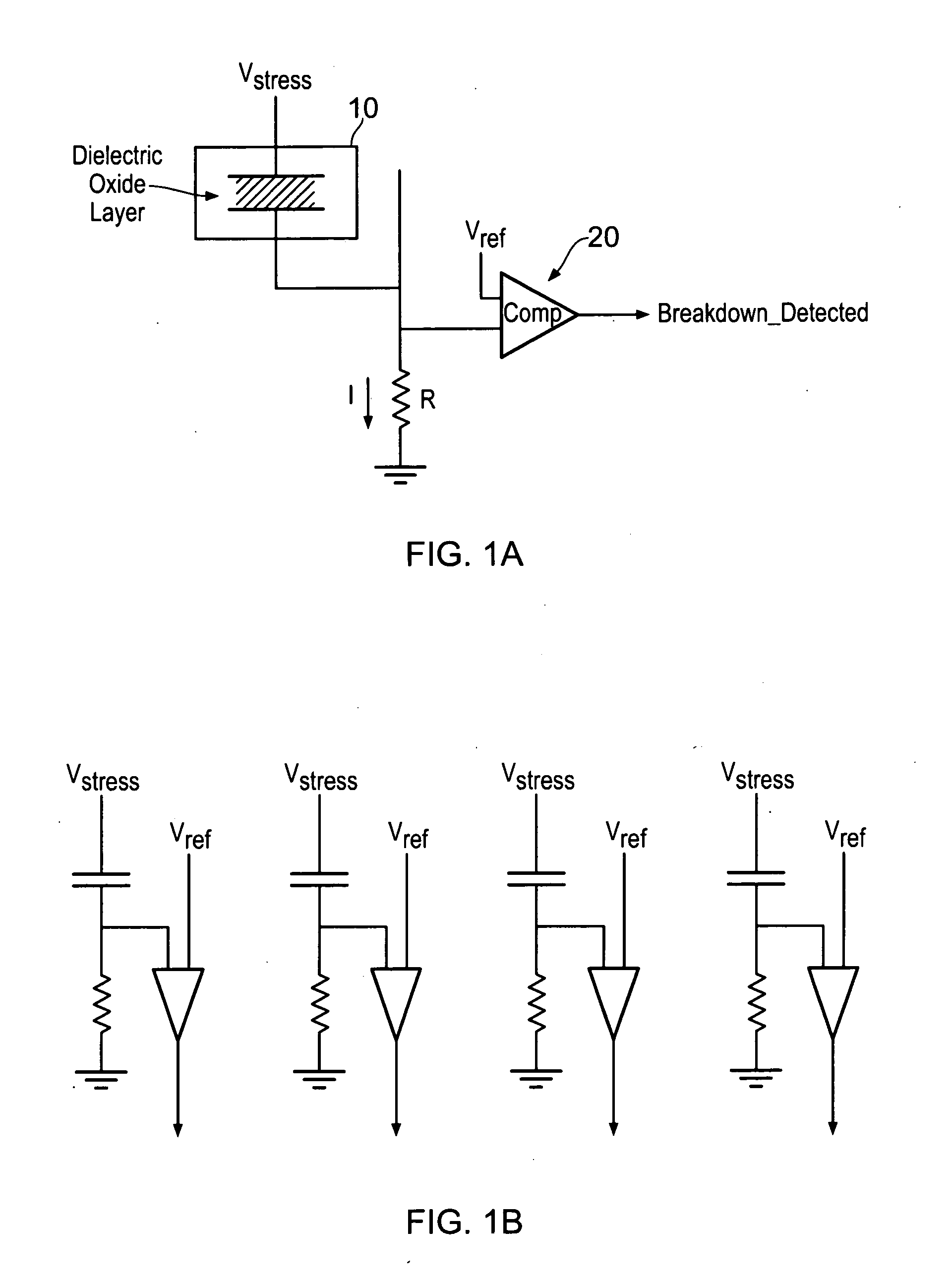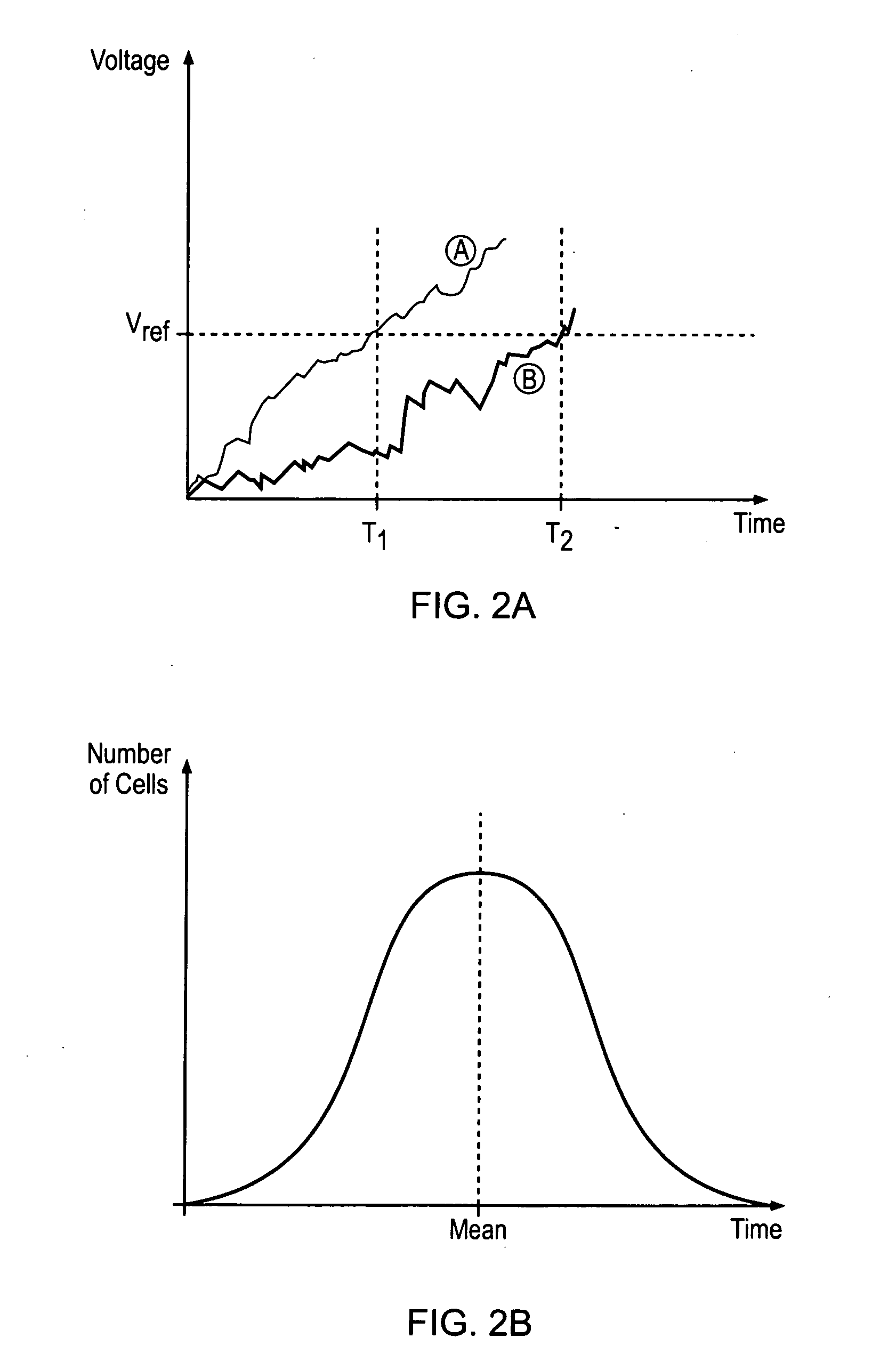Randomized value generation
- Summary
- Abstract
- Description
- Claims
- Application Information
AI Technical Summary
Benefits of technology
Problems solved by technology
Method used
Image
Examples
first embodiment
[0061]FIG. 3 schematically illustrates a data processing apparatus in a first embodiment in which a cell comprising a dielectric oxide layer is used to generate a random binary stream. In this example, the dielectric oxide layer is within a thin-oxide SVT transistor 100 with its source and drain tied together to form a moscap. A sense amplifier 105 provides the comparator which compares the output voltage of the transistor 100 to the reference voltage SA_VREF. Note that the nominal resistance connecting the transistor 100 to ground is not shown for clarity of illustration.
[0062]A pulse generator 110 is enabled at the same time that the stress voltage is applied to transistor 100 and the resulting pulsed signal is counted by bit counter 115, which in this example is embodied by concatenated flops 120. Accordingly, the bit counter runs from the time the stress voltage is applied to the transistor 100, until the point at which the output voltage of the transistor 100 exceeds SA_VREF ca...
second embodiment
[0075]FIG. 9 schematically illustrates a series of steps taken in the second embodiment in which all cells in the array are simultaneously stressed to generate a unique ID for the apparatus. The flow begins at step 400 where the stress voltage is applied to all the cells in the array. The stress voltage is applied for a predetermined time increment period (step 405) and then (with the stress voltage removed) at step 410 the cells are read out. In one variant (the “global” algorithm) all cells are read out. In an alternative variant, only a subset of the cells are read out (the “canary” algorithm). Then a step 415 it is determined if more than half of those cells which have been read out have experienced oxide breakdown. If they have not, then the flow return to step 400 where the stress voltage is reapplied to all cells in the array.
[0076]However, once the 50 percent mark has been reached, then at step 420 the stress voltage is disconnected from those cells which have not experience...
PUM
 Login to View More
Login to View More Abstract
Description
Claims
Application Information
 Login to View More
Login to View More - R&D
- Intellectual Property
- Life Sciences
- Materials
- Tech Scout
- Unparalleled Data Quality
- Higher Quality Content
- 60% Fewer Hallucinations
Browse by: Latest US Patents, China's latest patents, Technical Efficacy Thesaurus, Application Domain, Technology Topic, Popular Technical Reports.
© 2025 PatSnap. All rights reserved.Legal|Privacy policy|Modern Slavery Act Transparency Statement|Sitemap|About US| Contact US: help@patsnap.com



